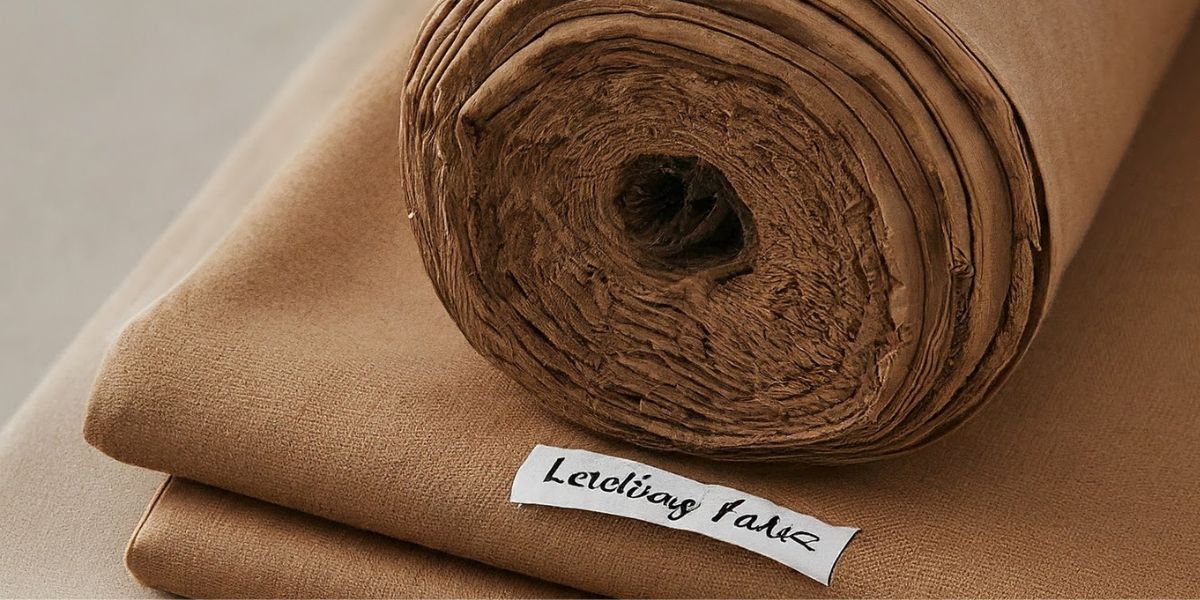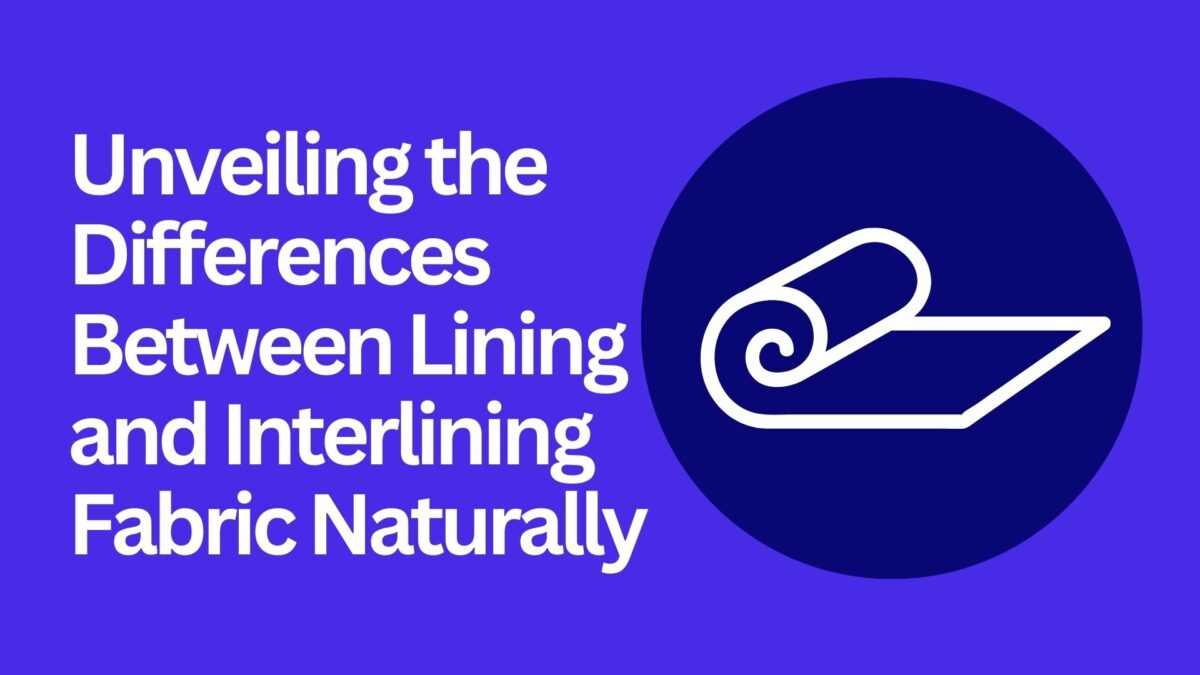Unveiling the Differences Between Lining and Interlining Fabric Naturally
Have you ever peeked inside a beautifully crafted garment and wondered what goes into creating that smooth, structured feel? It’s not just about the stunning outer fabric – hidden beneath the surface lie two secret weapons: lining and interlining. But what exactly are they, and how do they differ? Don’t worry, fellow sewing enthusiast, this guide will unveil the mysteries of lining and interlining fabric, helping you decide which one (or both!) is perfect for your next sewing project, with a focus on natural and eco-friendly options.
Understanding Lining & Interlinin
Lining: The Comfort Champion
Interlining: The Structure Superhero
Unveiling the Key Differences: Lining vs. Interlining Fabric
Location & Purpose
Material & Texture
Benefits & Drawbacks
When to Use Each Fabric
Understanding Lining & Interlining
Lining and interlining might sound similar, but they serve distinct purposes in garment construction. Here’s a breakdown:
Lining: The Comfort Champion
Imagine slipping into a luxurious coat, the fabric soft and smooth against your skin. That’s the magic of a lining! A lining is a separate layer of fabric sewn to the inside of a garment, typically on the bodice, sleeves, and skirt. Here are the key benefits it offers:
Comfort: Lining prevents the outer fabric from feeling rough or scratchy against your skin, especially with heavier materials like wool or tweed.
Durability: A lining acts as a protective barrier, shielding the outer fabric from wear and tear caused by sweat, friction, and everyday use.
Shape Retention: Lining can add a bit of body and stability to garments, helping them maintain their shape and drape.
Finishing Touch: Lining adds a touch of refinement and quality to a garment, often featuring a contrasting color or pattern for a unique style statement.
Interlining: The Structure Superhero
Interlining fabric, on the other hand, is a hidden hero that works its magic within the layers of a garment. It’s a layer of material sandwiched between the outer fabric and the lining (or directly attached to the outer fabric if there’s no lining). Unlike lining, interlining is all about structure and support:
Structured Shapes: Interlining provides essential support for achieving specific shapes and silhouettes. Think crisp collars, sharp lapels on jackets, or structured bodices for dresses.
Fray Prevention: Raw edges on inner seams can fray over time. Interlining acts as a barrier, preventing fraying and adding stability to the construction.

Unveiling the Key Differences: Lining vs. Interlining Fabric
Now that you understand the basic roles of lining and interlining, let’s delve deeper into their specific differences:
Location & Purpose:
Lining: Sewn to the inside of a garment, visible when worn (unless completely covered by another layer). Its primary purpose is to enhance comfort, durability, and add a finishing touch.
Interlining (Interlining fabric): Sandwiched between the outer fabric and the lining (or directly attached to the outer fabric if there’s no lining). It’s hidden from view and focuses on providing structure and support.
Material & Texture:
Lining: Typically made from lightweight, breathable fabrics like cotton, silk, rayon, or polyester. They come in a variety of textures, from smooth and silky to slightly textured.
Interlining (Interlining fabric): Available in woven or non-woven options, with varying degrees of weight and stiffness. Common materials include woven fusible interlining (for crispness), non-woven fusible interlining (for softer drape), and sew-in interfacing (for more control). Natural interlining options include recycled materials or natural fiber blends. Look for options like “collar interlining naturally” for a sustainable touch.
When to Use Each Fabric
Here’s when to consider using lining and interlining fabric, with a focus on natural options:
Lining:
Heavyweight Fabrics: Lining is a good choice for garments made from heavier fabrics like wool or tweed, as it prevents them from feeling rough against the skin. Consider natural linings like organic cotton or linen for breathability and comfort.
Close-fitting Garments: Lining is ideal for dresses, skirts, and pants that fit close to the body, as it provides extra comfort and prevents the outer fabric from clinging. Explore linings made from bamboo for its moisture-wicking properties, perfect for activewear.
Interlining Fabric Naturally:
When looking for interlining, explore options that are kinder to the environment:
Recycled Polyester Interlining: Look for interlining made from recycled plastic bottles, offering a more sustainable alternative to traditional polyester interlining.
Natural Fiber Blends: Explore interlining options that combine natural fibers like cotton or wool with other materials for a balance of structure and eco-friendliness.
Plant-Based Interlining: Consider options made from bamboo or even cork, which offer surprising structure and are biodegradable. These may not be suitable for projects requiring extreme stiffness.
Types of Interlining Fabric Natrually :
- Fusible Interlining Naturally: While traditional fusible interlining is often synthetic, some brands offer options made with natural adhesives.
- Sew-in Interfacing Naturally: This type of interlining allows for more control during sewing and can be made from natural materials like cotton or wool. Look for options labeled collar interlining naturally for a sustainable touch in structured collars.
Remember: When choosing interlining fabrics naturally, consider the desired level of stiffness and breathability for your project.
Choosing the Right Fabric of Your Project
Now that you understand the key differences between lining and interlining fabric, you’re ready to choose the right fabric for your next sewing project! Here are some additional tips
Lining: Consider the weight and breathability of both the lining and outer fabric. Opt for breathable options like organic cotton or rayon for close-fitting garments. Think about the desired look and feel – do you want a classic, smooth lining or a more textured accent piece made from a natural fabric?
Interlining Fabric Naturally: Choose the weight and stiffness based on the desired structure and the outer fabric’s weight. Consider recycled polyester interlining or natural fiber blends for a balance of structure and sustainability. Sew-in interfacing naturally allows for more control during sewing.
Remember
Don’t be afraid to experiment! Consider the specific needs of your project and explore different lining and interlining options to achieve the perfect combination of comfort, structure, and style, while prioritizing natural and eco-friendly materials.
Conclusion
Lining and interlining are essential tools in any sewing enthusiast’s arsenal. By understanding the distinct roles they play in garment construction and prioritizing natural and eco-friendly options, you can create beautiful garments that are comfortable, well-structured, and made with a conscience towards the environment. So, get out there, experiment with different lining and interlining options naturally, and unlock a world of creative possibilities!
Happy sewing

Shweta, a textile designer with a keen eye and deep knowledge of fabrics, translates her passion into unique designs. She loves to share her expertise and ignite a love for textiles in others. Dive into the world of fabrics with Shweta!



